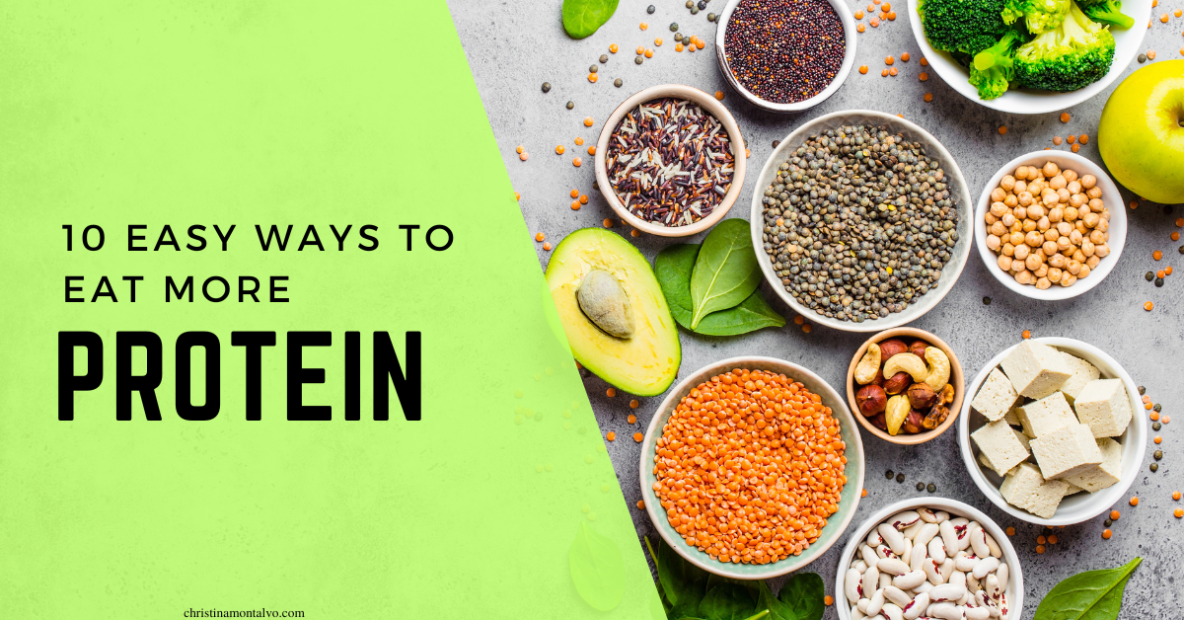There are 4 macronutrients that are important to try and eat at most meals: carbs, protein, fat, and fiber.
Protein is one of the more difficult macros to get in at most meals:
- They can take a lot of time to prepare and cook
- Meat sounds gross sometimes, especially if you’ve been eating a lot of it
- Convenient protein options (power, bars) can cause stomach upset and be expensive
- Meat can be expensive!
Most people aren’t eating nearly enough protein. The Standard American Diet doesn’t include a lean protein source until dinner, which means you’re definitely not getting in enough protein each day.
The benefits of eating protein at most meals:
- Muscle Growth and Repair: Protein is essential for building and repairing muscle tissue, making it particularly important for athletes, bodybuilders, and anyone engaging in regular physical activity.
- Weight Management: High-protein diets can aid in weight loss and management by increasing feelings of fullness, which can help reduce overall calorie intake.
- Metabolism Boost: Protein has a higher thermic effect compared to fats and carbohydrates, meaning your body burns more calories digesting and metabolizing protein.
- Bone Health: Adequate protein intake is linked to better bone health and can help prevent osteoporosis, particularly in older adults.
- Blood Sugar Regulation: Protein can help stabilize blood sugar levels, reducing the risk of spikes and crashes that can occur with high carbohydrate meals.
- Enhanced Immune Function: Proteins are critical for the production of antibodies and immune cells, supporting the body’s defense against infections and illnesses.
- Hormone Regulation: Proteins play a role in the production and regulation of various hormones, including those involved in hunger and metabolism.
- Skin, Hair, and Nail Health: Protein is a key component of collagen and keratin, which are important for maintaining healthy skin, hair, and nails.
- Improved Recovery: After intense physical activity or injury, protein aids in faster recovery by repairing damaged tissues and promoting the growth of new cells.
- Nutrient Transport and Storage: Proteins help transport various substances throughout the body, including oxygen (via hemoglobin) and nutrients, ensuring cells receive the resources they need to function properly.
10 easy ways to eat more protein:
- Cottage cheese (add fruit. So good!)
- Greek yogurt
- Kefir
- Eggs (whole eggs! egg whites are great too, but that yolk is so high in nutrients!)
- Rotisserie Chicken
- Salmon in air fryer, 400 degrees, ~10-12 minutes depending on thickness
- Rice + beans (legumes) eaten together specifically
- Canned Tuna or Canned Chicken
- Ground beef or ground turkey (cooks in pan fast if thawed!)
- Frozen chicken nuggets (one of my fav go-tos when I’m pinched for time and energy)
There are (obviously) dozens of other ways to eat a protein source at most meals. A big way to help yourself would be to prep dinner most nights & make yourself enough for leftovers for lunch the next day. This way, you’re only “eating on the fly” for breakfast. If dinner is high in protein, you’re automating 2 of 3 main meals to have protein. Then you just have to choose which protein source sounds good for breakfast and snacks.
When I’m eating between official meals (every day), I’ll almost always default to my nutrition framework: carbs, protein, produce, something to make it taste good.
This can look like:
- High protein/high quality beef jerky, cheese, and pickles. Doesn’t follow the framework perfectly, but I’m obsessed with all things charcuterie vibes
- A protein shake or protein bar, an apple + peanut butter
- Lunchmeat, cheese, pretzels, + grapes (or any other easy-to-eat produce)
- Cottage cheese or greek yogurt with granola + drizzle of honey (add chocolate chips for additional fun)
Check out my nutrition framework without dieting here!


